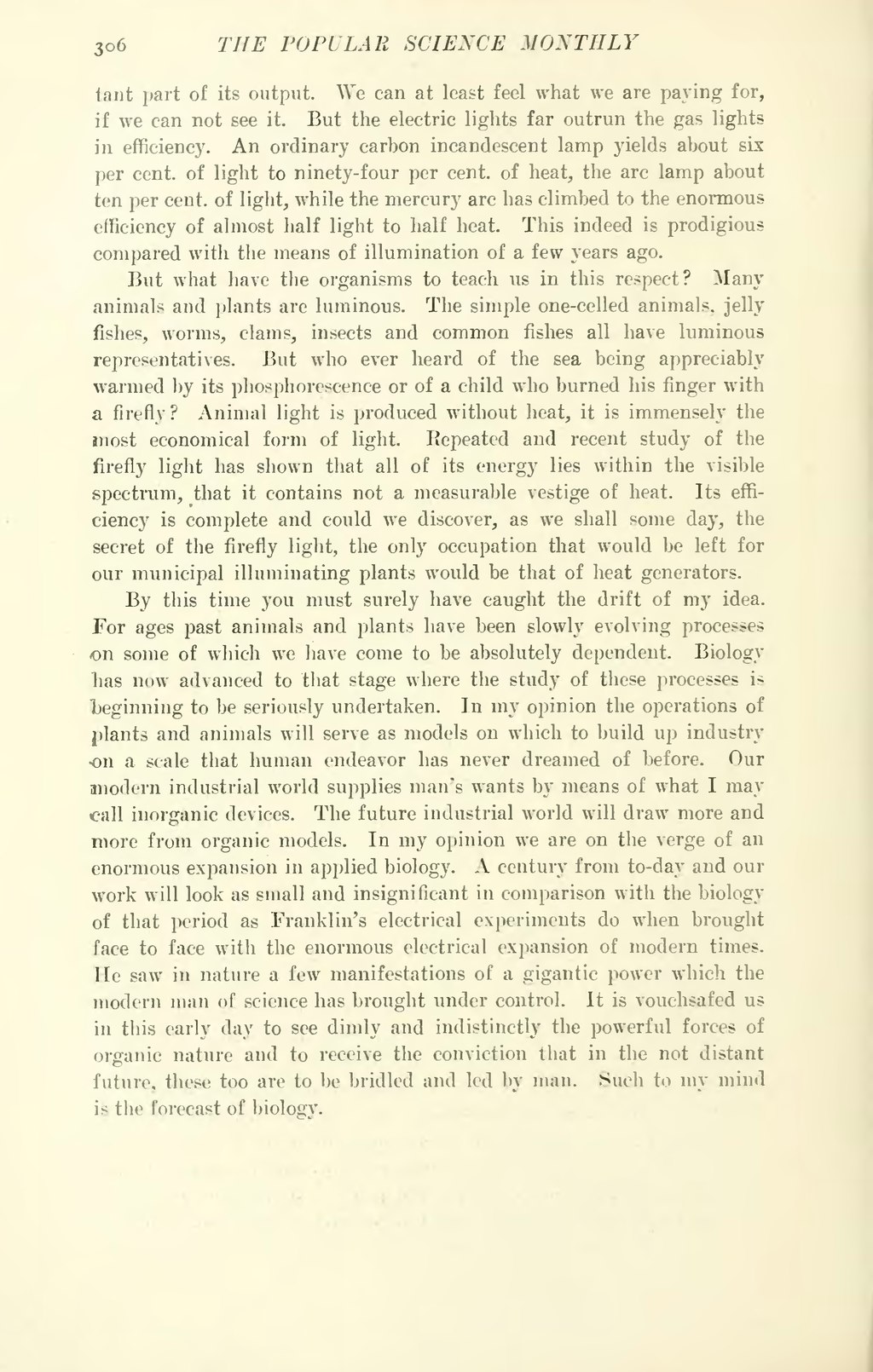tant part of its output. We can at least feel what we are paying for, if we can not see it. But the electric lights far outrun the gas lights in efficiency. An ordinary carbon incandescent lamp yields about six per cent, of light to ninety-four per cent, of heat, the arc lamp about ten per cent, of light, while the mercury arc has climbed to the enormous efficiency of almost half light to half heat. This indeed is prodigious compared with the means of illumination of a few years ago.
But what have the organisms to teach us in this respect? Many animals and plants are luminous. The simple one-celled animals, jelly fishes, worms, clams, insects and common fishes all have luminous representatives. But who ever heard of the sea being appreciably warmed by its phosphorescence or of a child who burned his finger with a firefly? Animal light is produced without heat, it is immensely the most economical form of light. Repeated and recent study of the firefly light has shown that all of its energy lies within the visible spectrum, that it contains not a measurable vestige of heat. Its efficiency is complete and could we discover, as we shall some day, the secret of the firefly light, the only occupation that would be left for our municipal illuminating plants would be that of heat generators.
By this time you must surely have caught the drift of my idea. For ages past animals and plants have been slowly evolving processes on some of which we have come to be absolutely dependent. Biology has now advanced to that stage where the study of these processes is beginning to be seriously undertaken. In my opinion the operations of plants and animals will serve as models on which to build up industry on a scale that human endeavor has never dreamed of before. Our modern industrial world supplies man's wants by means of what I may call inorganic devices. The future industrial world will draw more and more from organic models. In my opinion we are on the verge of an enormous expansion in applied biology. A century from to-day and our work will look as small and insignificant in comparison with the biology of that period as Franklin's electrical experiments do when brought face to face with the enormous electrical expansion of modern times. He saw in nature a few manifestations of a gigantic power which the modern man of science has brought under control. It is vouchsafed us in this early day to see dimly and indistinctly the powerful forces of organic nature and to receive the conviction that in the not distant future, these too are to be bridled and led by man. Such to my mind is the forecast of biology.
